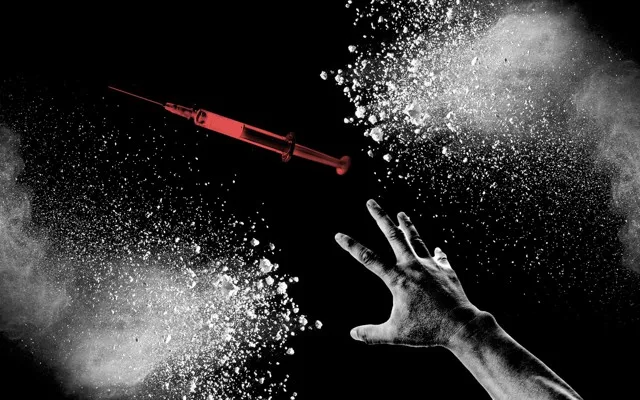
SEATTLE—Mere blocks from the tourists swarming Pike Place Market, Stacy Lenny pointed out the tradecraft of some of her drug-dealing clients: “There’s Todd with a wheelchair—that’s good camo for a drug hustle,” she said, nodding toward one man sitting on the corner and dealing crack out of his motorized scooter. “Missy has a lot of drugs in that bag,” she said, about another woman passing by.A 50-year-old mom with short, gray hair and bright-blue glasses, Lenny is a harm-reduction recovery specialist with a program called REACH. The job involves driving around Seattle finding homeless drug users, befriending them, and trying to help them with their health and housing problems.Lenny and I drove south of the city together, down roads lined with RVs and strewn with trash. Seattle has lately been strained by both rising homelessnessand heroin addiction. Last year, a record 359 people died in Seattle from drug overdoses. The majority of them involved opioids—heroin or prescription painkillers.
Working with the city’s most economically fragile addicts has made Lenny skeptical about the typical rhetoric about addiction—that it is a moral failing, that it is a choice, that users all want treatment, that addicts should be funneled swiftly into rehab. At rehab, they might be required to “admit to being a ‘junkie,’
or you detox and might die, or turn your life over to God,” she said.That works for some people, but others spin through treatment and end up right back on the streets or using again. So instead of telling addicts what they need or where they should go, Lenny listens to what addicts tell her they need.Eventually Lenny pulled her car over on a dirt patch surrounded by a chain-link fence. The fence was adorned with ribbons in the shape of a heart, along with a hand-drawn sign: Camp Second Chance. Alongside rows of tents and makeshift tiny houses for the homeless, there was a TV tent, a library, and a kitchen stocked with coffee cups and Cinnamon Toast Crunch. The camp doesn’t allow drugs or alcohol on the premises—the homeless people who live here decided to outlaw drugs, one resident explained to me, in an effort to avoid the awful violence that happens in non-sober homeless camps, like one nearby called “The Jungle.”At the center of Camp Second Chance, I met Tammy Stephen, who lives in one of the few dozen domed tents that are lined up on pallets. She was sharply attired in a black dress and Uggs-style boots, and she had a similarly dignified perspective on her living situation: “We’re not homeless, we’re houseless,” she said. “This is our home.”
Our conversation turned to one of the hottest topics in Seattle, one so controversial that everyone—including an Uber driver and a Canadian border guard—offered up his own, unsolicited take when I revealed what I was there to report. Seattle is poised to become the first city in America to open up a so-called safe-injection site—a place where addicts can inject heroin openly under the watchful eyes of nurses, who could then rescue them in the case of an overdose by using the opioid antagonist* naloxone. Even in ultraliberal Seattle, where marijuana is legal and pottery shops advertise being part of the “Resistance,” the idea seems, to many, a little too much like enabling.“We need to stigmatize the people hooked on heroin who refuse to go into treatment, to save their lives,” Washington State Senator Mark Miloscia, an opponent of the safe-injection facilities, told Al Jazeera. “We need to push people into treatment, with cultural values and cultural pressure.”To Stephen, though, safe-consumption sites are “the best thing in the world.” If they had existed when her 27-year-old daughter, Emily Hays, was still using heroin a few years ago, “she would have had somewhere other than a Subway bathroom” to shoot up, Stephen told me. Hays overdosed several times before getting clean, and some of her friends died from overdoses.Stephen had nagged the girl to enter treatment, saying: “Why won’t you quit? Why don’t you stop?”